Moisture brought a fall hay crop after two years of drought.
Cattle were still on summer pasture, and fall roundup was a couple weeks away. The concern of the day was getting hay in before the rain.
Life was about to change with the forecast for ranchers within the 200-mile radius of the Black Hills region of western South Dakota.
Packing 70 mph winds and dumping 3 to 5 feet of snow, Storm Atlas ignored the calendar and entered the record books as the second-largest snowfall for the area, lasting Friday night through Saturday, Oct. 4-5, 2013.
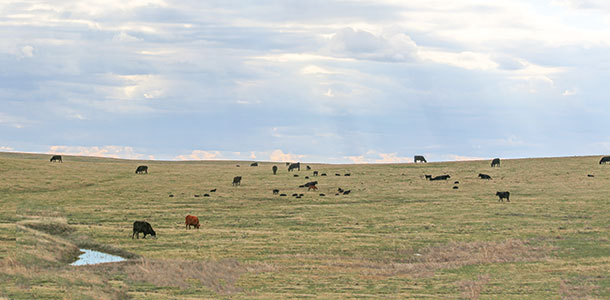
It was the blizzard’s unusual and untimely delivery – first soaking the still-sleek summer coats with almost 2 inches of rain, followed by a change in wind direction flushing cattle from cover to drift disoriented – that resulted in tens of thousands of head lost and as a result, galvanized the metal communities are made of on the prairie.
Individual herd losses averaged 40 to 50 percent, and some ranchers lost nearly all of their cattle.
Accounts reflect a widespread loss ratio of 3-to-1 mature bred females over calves, suggesting a five-year minimum to rebuild. “When you lose half of the factory, can the business still stand?” That question was top-of-mind during a spring visit to the region.
A silver lining in the aftermath is the strengthening of old bonds and building of new ones between older and younger ranchers – in many cases working together in previously unforeseen leasing arrangements to secure the future.
Within four days of the storm, both the Heifers for South Dakota (HSD), founded by Montana rancher Ty Linger, and the Rancher Relief Fund (RRF), established by the South Dakota Stockgrowers, Cattlemen and Sheepgrowers associations, began bridging the gap to restore hope.
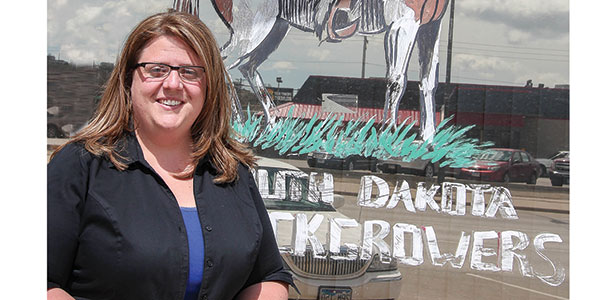
According to Stockgrowers executive director Silvia Christen, livestock losses reported to the RRF from 600 applicants as of May 11, 2014, totaled 43,000 head. Ranchers and officials expect the final tally to end up between 60,000 and 80,000 head as the USDA started receiving the Livestock Indemnity Program (LIP) applications in May.
The LIP was implemented with the 2014 Farm Bill as a safety net for weather-related livestock losses, paying 75 percent of the value of the animals at the time of the loss. That aid will spur re-investment, impacting the rural economies that depend on the ranchers.
These were not insurable losses, except for cattle found to have accidentally fallen into a body of water. Christen said ranch organizations are working with public officials and private industry to develop products for such natural disasters in the future.
But in the Atlas aftermath, it was the compassion of individuals that sustained ranchers.
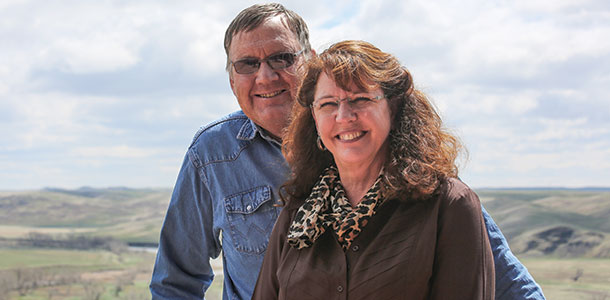
Paula Phillips of Hereford recalls hearing from the local feed store that donated boots had arrived. “We had ‘blizzard-brain’ for weeks, misplacing things, feeling disoriented. You don’t realize how awesome it can be to be given a new pair of good working boots, and the gratitude attached to that blessing.”
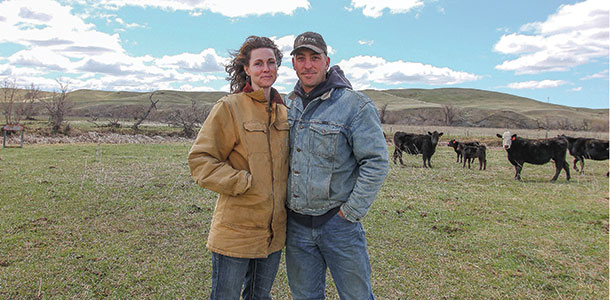
“Every time we hit a low point, a new package would arrive,” says Shawn Freeland, a beginning rancher near Caputa who lost half of his herd.
From elementary school classes in the Midwest to Sunday school classes closer to home, the gifts for Shawn and Kristy’s two young daughters before Christmas and the food at Thanksgiving were welcome reminders that people cared.
Having received bred heifers through HSD, Freeland says the generosity of other ranchers and simple words written by children hundreds of miles away kept them going. “They told us: ‘Don’t quit. We need you.’ Their faith in us was compelling.”
During a May 1 visit, the snow was thawing, and ranchers were still finding – and burying – the October storm mortalities. They were also filling out paperwork for LIP. The spring brandings were a time to take stock; the smaller calf crop a reminder of so many cows lost.
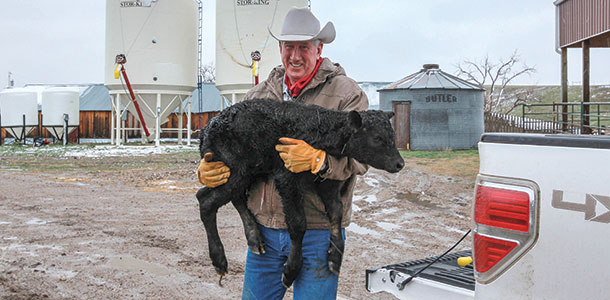
“As they calved-in, and we tagged and recorded, it was hard not to think of dams, granddams, sisters, that didn’t make it,” observes Dean Wink of Howes. The Wink Ranch, first homesteaded by his wife Joan’s grandparents, is 20 miles east of Union Center, where the storm delivered much of its hardest punch.
Wink lost a sizeable portion of the cow herd. He is thankful there was no loss of human life. “It was a tough deal. Cattle were mixed up, having drifted 12 miles or so. When I think of what everyone was doing and what we were faced with after the storm, it’s amazing we didn’t lose anyone.”
Those first 48 hours were spent digging out before cattlemen could move toward where the cattle were. Some were afoot, others on horseback, or if they were lucky they could get to their equipment. It took hours to navigate what would normally be a short distance.
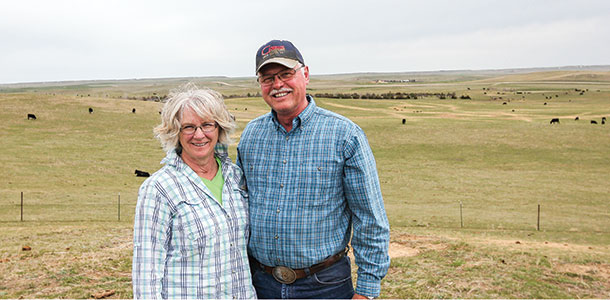
“The snow was blue,” says Gary Cammack of Union Center. “It had this blue cast to it, so heavy with moisture. It was too much for the cattle.”
The young ranchers are his concern. “Older ranchers have some equity built up,” he says, “but the young ranchers have debts and need income to keep going.”
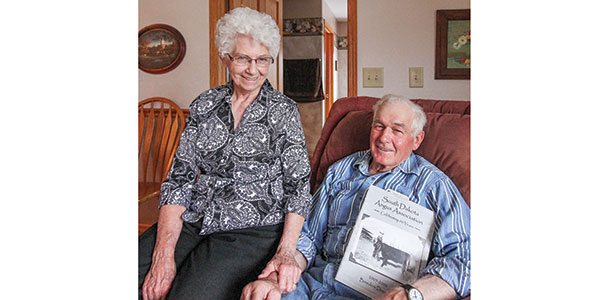
Older ranchers like Hugh Ingalls chose to leave the early offers of help on the table so more could go to the younger generation.
He lost 189 cows, including 12 of his 21 Pathfinder cows, representing decades of genetic improvement and generations of “family” at Hugh and Eleanor Ingalls’ Centennial Angus near Faith. He found most of his losses along the fence, down by the gate. “They were waiting for me,” he says softly.
Ingalls will rebuild. “Maybe not to where we were, but we’ll build back,” he says. “I think our genetics go deep enough to do it.”
He knew how bad it was by Saturday morning but was unable to get far in reaching the cattle until Sunday.
“No one could have known how bad this deal would get,” recalls Scott Phillips of Hereford, whose grandparents met generations ago homesteading land here. He was home alone when the storm hit Friday night. All of his equipment was out on hay ground.
His hired man was away, and his wife, Paula, was at the Ag Women’s conference in Rapid City, where she was snowed in with her peers until Sunday evening.
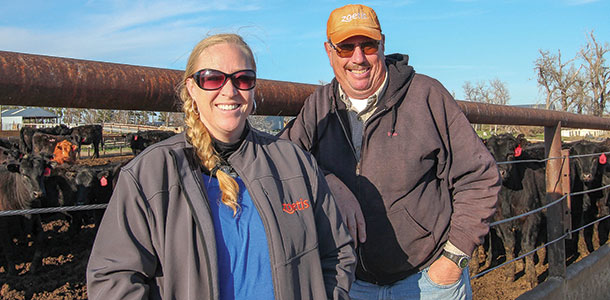
She and Amy Pravecek – Zoetis territory manager who has cattle with her husband, Ben, near Winner – both recall the long drive home from that conference when the cattle-strewn highway re-opened.
“I found Scott standing along the road just looking at the cattle piled up in the draw,” Paula recalls. “It was unfathomable.”
“There were dead cattle along the road as far as you could see,” Pravecek recalls, adding that her cell phone was loaded with messages. “I immediately called Zoetis and told them these people are going to need help. They told me to do whatever I needed to.”
Christen, too, fielded hundreds of calls. And yet, media reports were scarce. Once the ranchers had their electricity back, they were surprised to see it wasn’t all over the news. They had been operating in what one observer called “a parallel universe.”
Sorting was a monumental task. In addition to assembling donated quantities of animal health products for the surviving cattle, Pravecek launched the “South Dakota cattle locator” on Facebook, and within a few days there were 50,000 hits.
“I kept hearing about people finding other people’s cattle and trying to find their own. With a centralized post point, we got a lot of cattle matched up; horses too,” she says. “Everyone was feeding and caring for what cattle they had while looking for what they lost.”
“You would see an ear tag in the snow and realizing it wasn’t one of your own, feel both relief and guilt because you knew that animal is someone’s loss,” Freeland explains his conflicting emotions as he sorted the casualties showing up at Dry Creek.
Every once in a while, he said, “You would find a live one, and it was energizing.” Nine days after the storm he found his neighbor’s aged cow Anabelle, buried under a drift but alive. She had once been their bottle calf, and he was pretty excited about that.
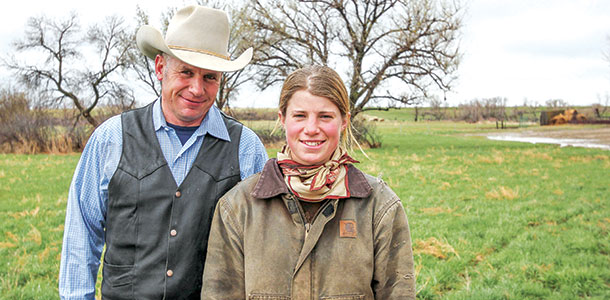
“The cattle were wind-blown. Some of ours drifted 10 miles. When we went out looking for our brand, it seemed like everyone else’s dead cattle were on us and ours were dead somewhere else,” says Jason Reed of Faith. His family dates back here to the old Brushie Creek days; the pioneer town that once stood where his ranch is today.
Jason’s daughter Jerilyn graduated from South Dakota State and borrowed money a year earlier to start a herd of her own. She was three weeks away from weaning for sale with notes due.
“It was stressful for her,” Jason recalls. “Then she was notified there were eight bred heifers from HSD. It’s a great thing when people care that much to give such a beautiful gift.”
Ranchers spoke about loan extensions, lenders putting a value on the dead cattle and loaning that value at a lower interest rate to restock. But buying grew difficult as heifers became hard to find in the region and prices escalated.
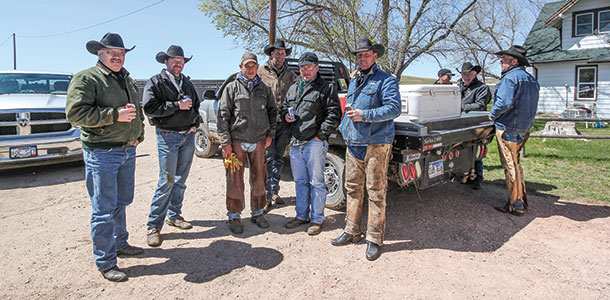
Older cattlemen started pairing up with younger ranchers. Some made pasture ground available and others loaned bred heifers to provide an income-producing calf crop to help young ranchers get back in.
“Amazing people are in this business,” Ingalls observes. “I am encouraged by the local effort and the willingness of the banks to work with our young ranchers.”
HSD moved donated bred heifers to new homes from October through February and recently bred and moved groups of donated open heifers to new homes in June.
The RRF, which had accepted donations and pledges of $5.4 million since last October, cut final checks to identified ranchers as recently as June 1. In both cases, aid was prioritized to young ranchers and to ranchers with the highest losses.
According to data from the Black Hills Community Foundation, which served as administrator of the Rancher Relief Fund, Meade County received the largest share, $1.6 million, of the $5.4 million raised from donations sent in from around the world.
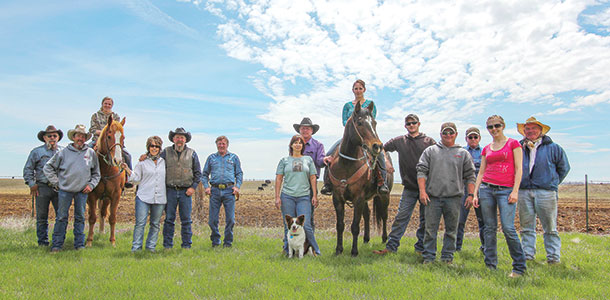
Meade County was considered “ground zero” as far as damage and cattle losses during Storm Atlas. Over 15,000 head of livestock in Meade County were reported dead to the RRF as of May 1, 2014.
Second largest losses were in Pennington County just south of Meade, where nearly 6,000 head perished. The ranchers interviewed for this story were located primarily in Meade County, as well as Pennington and Custer counties. All three counties, combined, received $2.5 million in nongovernment aid through RRF.
The amounts not shown in these totals were sent to ranchers in Wyoming and Nebraska affected by Storm Atlas. Total cattle losses are expected to rise after the Livestock Indemnity Program applications are tallied.
In the midst of losses that are still being counted, there is hope, faith and boots-on-the-ground work still ongoing. Ranchers from over a dozen states have reached out with not only heifer donations and financial assistance, but also work crews of junior cattlemen have come from as far away as Alabama as recently as June.
“The stock dams are full. There is moisture in the soil, and we have new calves on the ground,” says Wink. “The LIP will help ranchers and our local economy recover. But it was the immediate efforts like HSD and RRF that kept people going and show what kind of country we live in.” ![]()
Sherry Bunting is a freelance writer in eastern Pennsylvania.
PHOTOS
PHOTO 1: The cow herd at the Sanders Ranch near Hermosa grazes grass in early spring. The spring branding included new calves born in South Dakota from bred heifers donated from Virginia after Storm Atlas.
PHOTO 2: New calves and their dams dot the landscape of the Wink Ranch near Union City, S.D.
PHOTO 3: Silvia Christen, executive director of the South Dakota Stockgrowers Association.
PHOTO 4: Scott and Paula Phillips said local contractors were instrumental in helping them manage the recovery of mortalities.
PHOTO 5: Kristy and Shawn Freeland have taken on additional jobs to preserve their passion for ranching in rebuilding after the storm.
PHOTO 6: The Wink Ranch suffered significant cattle losses, but Dean Wink is thankful no human lives were lost.
PHOTO 7: Gary and Amy Cammack spent days searching for cattle after the storm. They split up with their children, some on horseback, others on ATVs, and found it took hours to cover short distances after the storm.
PHOTO 8: Hugh and Eleanor Ingalss were pioneers in Angus cattle back when Shorthorns and Herefords ruled the day. Atlas took one-third of their cattle.
PHOTO 9: Cattleman Tom Brunner donated his facilities to commingle lost herds, while Amy Pravecek of Zoetis spent countless hours transporting cattle and getting donated antibiotics to veterinarians for surviving cattle.
PHOTO 10: Jason Reed and his daughter Jerilyn each had steep cattle losses in their respective herds.
PHOTO 11: Ranchers gathered for a May branding at the Harrison Ranch, managed by Tyler and Tiffani Robertson, to talk about the struggle and emotional bond they have with the cattle in their care. As one described it: “Last fall, the birds just stopped singing. The land went silent. It’s good to hear the song of the meadowlark again.”
PHOTO 12: Mark Sanders of Sanders Ranch with his brothers Jim and Ed with their families in Hermosa. Photos by Sherry Bunting.
Winter Storm Atlas By the numbers
Storm date: Oct. 3-5, 2013
Area: Western South Dakota, eastern Wyoming and into parts of North Dakota, Colorado and Nebraska.
Snowfall: Range went from 23 inches in Rapid City, S.D. to 58 inches in Lawrence County, S.D.
Donations raised: $5.4 million – Rancher Relief Fund
Cattle losses: 43,000 head (as of May 1, 2014)
Meade County - 15,000 + head
Pennington County – 6,000 head
Sources: Rancher Relief Fund, South Dakota Stockgrowers Association. Weather.com








